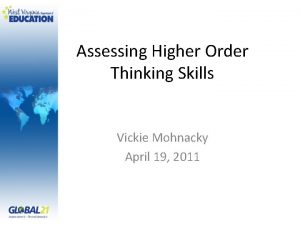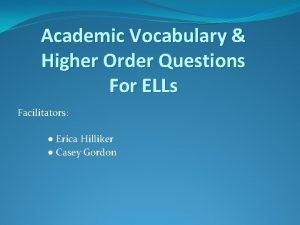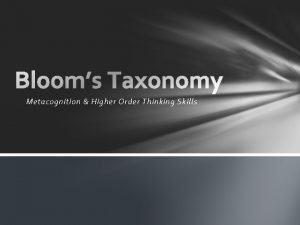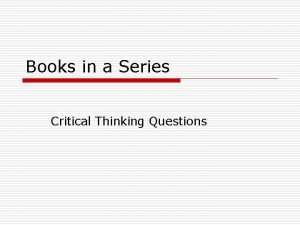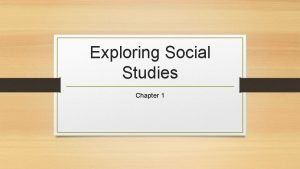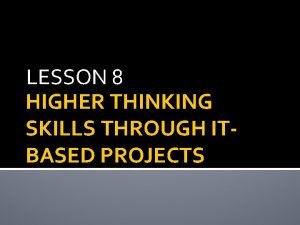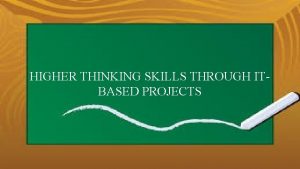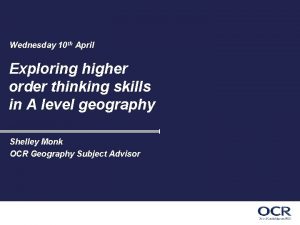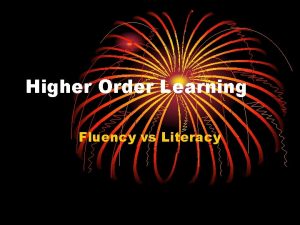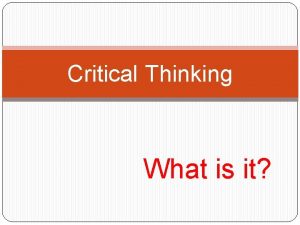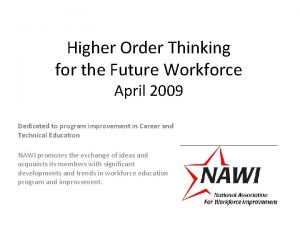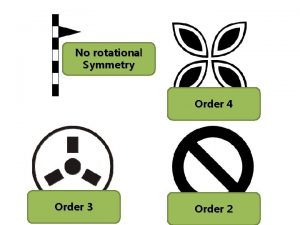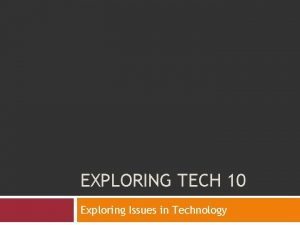Wednesday 10 th April Exploring higher order thinking



















- Slides: 19

Wednesday 10 th April Exploring higher order thinking skills in A level geography Shelley Monk OCR Geography Subject Advisor

Aims This interactive session will explore techniques to develop higher-order thinking skills with in the context of case studies, fieldwork and extended writing. The main aim of the session is to support teachers in developing their learners; independence in preparation for higher education and employment.


The relevance to geography Blooms taxonomy revised by Anderson and Krathwohl

HOT – Higher Order Thinking You know when students are engaged in HOT for example: • They visualise a problem by producing a diagram • Separate relevant and irrelevant information • Seek reasons and causes • Justify solutions • Look at different sides of a problem • Reveal assumptions in reasoning • Identify bias or inconsistencies, weigh up credibility of information / sources Why teach HOT? Students with deeper conceptual knowledge and understanding are better able to access that information for use in new contexts so therefore it is transferrable and can be applied to solve new problems.

Teaching HOT • Teach skills through real-world contexts • Vary the context in which students use a newly taught skills • Emphasise the ‘building blocks’ of HOT e. g. o Build back ground knowledge o Classify things into categories o Arrange items along a dimension e. g. rank them o Make hypotheses o Draw inferences o Analyse things into their components o Solve problems • Encourage students to think about their own thinking (metacognition)

Opportunities for HOT in geography • • • Concepts Case studies Interaction with resources Fieldwork / Independent Investigation Synopticity Essays – extended response Activity 1 – Reflecting on your own teaching, how do you currently teach or provide opportunities for HOT?

Fieldwork & the Independent Investigation What data can I collect and how? Synthesis How valid and reliable are my findings? Analysis The investigation process What data is relevant? How can I process it & what does it show? Interpretation Can I find a study or concept that fits? Evaluation Activity 2: Where are there opportunities to develop HOT skills?

Experiential Learning - Kolb ‘Learning is the process whereby knowledge is created through the transformation of experience’ (Kolb 1984)

Fieldwork & HOT For example • Teachers use of higher order questioning e. g. planning and data collection • Types of questions suitable for investigation • Build up knowledge ‘place knowledge’ through research (interpretation of resources) • Students to select and justify appropriate techniques for data collection Geographical enquiry encourages learners • Small scale pilot study – to be analytical and evaluative throughout opportunity to evaluate the process.

Activity 3(a) Synopticity & GIS Topics Global migration and Climate Change Geog. Skills • 4. 1 (c) Understand the nature and use of different types of geographical information • 4. 1 (e) Informed and critical questioning of data sources • 4. 3 (b) Qualitative skills – interpret analyse and evaluate a range of source material including textual and visual sources http: //storymaps. esri. com/stor ies/2017/climatemigrants/index. html Design an activity which encourages students to make connections between the topic areas and develops a skill/s.

Activity 3(b) Essays To what extent is it possible to manage hazards arising from earthquakes? (33 marks) Plan an activity to develop HOT which includes at least one of the following: • Collaboration • Interpretation (resources) • Language development (evaluation) • Application (Case studies and examples) e. g. Activity - Silent debate (developing arguments, drawing inferences, applying examples etc)

Activity 3(c) Case studies Specification content: How can HOT be developed from this activity? Use the pack of resources about Mill Road - Cambridge as ‘stimulus material’.

Activity 3 - feedback and reflections Each group to feedback ideas • Nature of the activities? • Which aspects of HOT are being developed? Reflection • What will you try with your own students?

Case studies and examples For the teacher ……. For the assessment ……. • • • Exemplifies a point • Relevance to the question asked (application) • Demonstrates knowledge and understanding • Help develop arguments • Adds complexity to arguments • Explain and validate / disagree with concepts Authenticity and excitement Distant places – challenging ideas Enhance students understanding Fieldwork opportunities ‘Real life’ V ‘the textbook’ To include: • Range in scale • Country variations • Case study v example How many is too many?

The assessment – AO 2 Application of knowledge and understanding to Interpret Geographical information Analyse and issues Evaluate Discussion: How do we develop these skills or provide opportunities for students to develop these skills? Context: Synoptic questions & essays

Essay writing How do you prepare your students to write essays? What do these require students to do? Command terms – discuss, assess, to what extent Exam ready…. . In the beginning! • • Deconstructing the question Writing frames – the structure List of topic words to include Case study summaries • • • A quick plan Command words Working out the ‘twist’ Key arguments Relevant case studies (range of scales) • Come to a view Evaluative ‘style’ language e. g. However, despite, whereas, on the other hand, the most (significant), compared with, but, yet, although, nevertheless, therefore or overall. Answers that are ‘more’ evaluative - explore several sides of an argument, demonstrate complexity and can potentially reach the higher levels. Its all about timing!

Higher order thinking within the context of developing ‘critical thinkers’. OECD and Harvard discuss important 21 st century skills for students in the global economy. Harvard – ‘global competencies’

Do get in touch……. . Geography Subject Advisor – Shelley Monk Email us at geography@ocr. org. uk or tweet us at @OCR_Geography
 Hots higher order thinking skills
Hots higher order thinking skills Higher order thinking iteach flashcards
Higher order thinking iteach flashcards Higher order thinking questions examples
Higher order thinking questions examples Higher order thinking questions for vocabulary
Higher order thinking questions for vocabulary Metacognition bloom's taxonomy
Metacognition bloom's taxonomy Affective objectives examples in math
Affective objectives examples in math Hots bloom's taxonomy
Hots bloom's taxonomy Maniac magee higher order thinking questions
Maniac magee higher order thinking questions Exploring social studies lesson 1 thinking like a historian
Exploring social studies lesson 1 thinking like a historian 1st order 2nd order 3rd order neurons
1st order 2nd order 3rd order neurons Higher thinking skills through it-based projects
Higher thinking skills through it-based projects Guided hypermedia projects
Guided hypermedia projects Higher thinking skills through it-based projects
Higher thinking skills through it-based projects Positive thinking vs negative thinking examples
Positive thinking vs negative thinking examples Thinking about your own thinking
Thinking about your own thinking Dichotomistic
Dichotomistic Perbedaan critical thinking dan creative thinking
Perbedaan critical thinking dan creative thinking Thinking about you thinking about me
Thinking about you thinking about me Monday tuesday wednesday thursday friday calendar
Monday tuesday wednesday thursday friday calendar Wednesday evening prayer
Wednesday evening prayer


